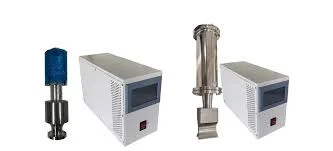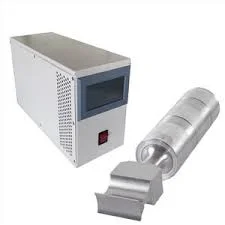The pharmaceutical industry is a highly regulated and complex field that demands precision, efficiency, and safety in its manufacturing processes. One of the critical challenges faced by pharmaceutical manufacturers is the presence of foam in liquid formulations. Foam can interfere with the production process, affect product quality, and even lead to contamination. To combat this issue, ultrasonic defoaming machines have emerged as a valuable solution. This blog will explore the application of ultrasonic defoaming machines in the pharmaceutical industry, their working principles, benefits.
Understanding Foam in Pharmaceutical Manufacturing
Foam is a collection of gas bubbles trapped in a liquid, and it can form during various stages of pharmaceutical manufacturing, including mixing, blending, and filling. The presence of foam can lead to several issues:
Reduced Efficiency: Foam can hinder the mixing process, leading to incomplete blending of active pharmaceutical ingredients (APIs) and excipients.
Quality Control Issues: Excessive foam can cause inconsistencies in product formulations, affecting the efficacy and safety of the final product.
Contamination Risks: Foam can create pathways for contamination, as it may trap airborne particles or microorganisms.
Operational Challenges: Foam can cause overflow during filling processes, leading to product loss and increased cleaning requirements.
Given these challenges, effective defoaming solutions are essential for maintaining quality and efficiency in pharmaceutical manufacturing.
What are Ultrasonic Defoaming Machines?
Ultrasonic defoaming machines utilize high-frequency sound waves to disrupt and collapse foam bubbles in liquid formulations. The technology is based on the principle of cavitation, where ultrasonic waves create microscopic bubbles in the liquid. When these bubbles collapse, they generate localized high temperatures and pressures, which can break down foam structures.

Key Components of Ultrasonic Defoaming Machines
Ultrasonic Transducer: This component converts electrical energy into mechanical energy, generating ultrasonic waves.
Generator: The generator produces the high-frequency electrical signals required for the transducer to function.
Tank or Chamber: The liquid formulation is placed in a tank or chamber where the ultrasonic waves are applied.
Control System: Modern ultrasonic defoaming machines come equipped with advanced control systems that allow for precise adjustments in frequency, amplitude, and duration of ultrasonic treatment.
Benefits of Ultrasonic Defoaming Machines in Pharmaceuticals
The application of ultrasonic defoaming machines in the pharmaceutical industry offers several advantages:
1. Enhanced Efficiency
Ultrasonic defoaming machines can significantly reduce the time required for defoaming compared to traditional methods. The rapid collapse of foam bubbles allows for quicker processing times, leading to increased overall efficiency in manufacturing.
2. Improved Product Quality
By effectively removing foam, ultrasonic defoaming machines help ensure uniformity in liquid formulations. This consistency is crucial for maintaining the efficacy and safety of pharmaceutical products, particularly in sensitive formulations like injectables and oral solutions.
3. Reduced Chemical Usage
Traditional defoaming methods often rely on chemical defoamers, which can introduce additional ingredients into the formulation. Ultrasonic defoaming machines eliminate the need for these chemicals, reducing the risk of contamination and adverse reactions in patients.
4. Versatility
Ultrasonic defoaming machines can be used across various stages of pharmaceutical manufacturing, including mixing, homogenization, and filling. Their versatility makes them suitable for a wide range of formulations, from viscous gels to thin liquids.
5. Environmentally Friendly
By minimizing the use of chemical defoamers, ultrasonic defoaming machines contribute to more sustainable manufacturing practices. This aligns with the growing emphasis on environmentally friendly processes in the pharmaceutical industry.

Applications of Ultrasonic Defoaming Machines
1. Liquid Formulation Development
In the early stages of drug development, researchers often work with small batches of liquid formulations. Ultrasonic defoaming machines can be employed to optimize these formulations by ensuring that foam does not interfere with the mixing of APIs and excipients.
2. Production of Injectables
Injectable formulations are particularly sensitive to foam, as air bubbles can compromise the safety and efficacy of the product. Ultrasonic defoaming machines are increasingly used in the production of injectables to ensure that foam is effectively removed before filling vials or syringes.
3. Oral Solutions and Suspensions
Foam can also pose challenges in the production of oral solutions and suspensions. Ultrasonic defoaming machines help maintain the stability and homogeneity of these formulations, ensuring that patients receive consistent dosages.
4. Biopharmaceutical Manufacturing
In biopharmaceutical manufacturing, where biological materials are involved, the presence of foam can lead to cell damage and reduced yields. Ultrasonic defoaming machines can be integrated into bioreactors to minimize foam formation during fermentation processes.
5. Cleaning and Maintenance
Ultrasonic defoaming machines can also be used for cleaning equipment in pharmaceutical manufacturing. The cavitation effect generated by ultrasonic waves can effectively remove residues and contaminants from surfaces, ensuring compliance with stringent hygiene standards.

Conclusion
Ultrasonic defoaming machines represent a significant advancement in the pharmaceutical industry, addressing the challenges posed by foam in liquid formulations. With their ability to enhance efficiency, improve product quality, and reduce the need for chemical additives, these machines are becoming an essential tool for pharmaceutical manufacturers. As the industry continues to evolve, the application of ultrasonic defoaming technology is expected to expand, paving the way for safer and more effective pharmaceutical products.
